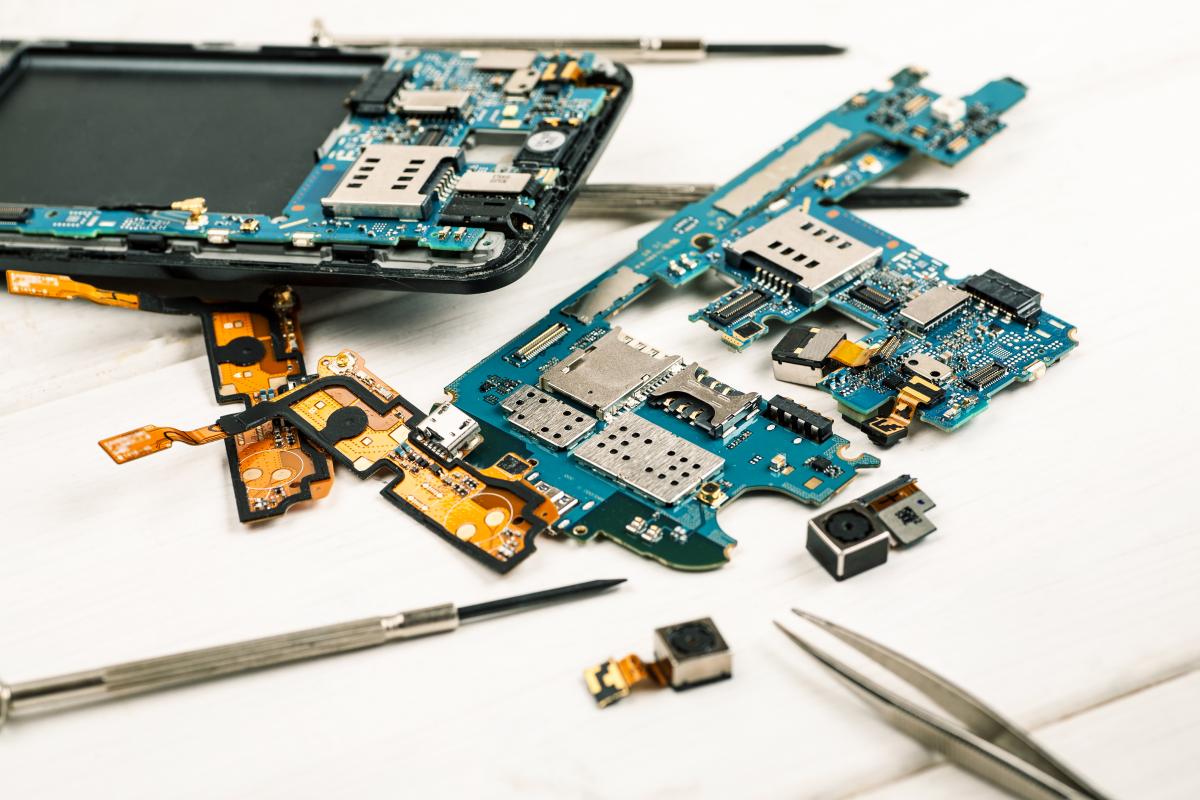Students get inside look at Apple’s “phone of the future”
December 31, 1969 Apple’s iPhone-X, launched in October 2017, was conspicuously designed with the future in mind. By ditching the familiar home button and adding Face ID recognition, it embraces an immersive technological future in which less and less separates us from our devices – which, increasingly, know who we are and will carry out tasks for us with a voice command, and perhaps someday even a thought.
Apple’s iPhone-X, launched in October 2017, was conspicuously designed with the future in mind. By ditching the familiar home button and adding Face ID recognition, it embraces an immersive technological future in which less and less separates us from our devices – which, increasingly, know who we are and will carry out tasks for us with a voice command, and perhaps someday even a thought.
On March 23, students at Capitol were treated to an up-close tour of the technological wizardry driving the new iPhone. Dr. Bill Cardoso of Creative Electron presented a live teardown of the iPhone-X before an enthusiastic audience, in an event sponsored by Surface Mount Technology Association.
For students at a technology-focused university, the event served as a striking reminder that the subjects they are studying continue to yield transformative innovations – breakthroughs that rea reshaping the way humans live, work, and interact.
“At Capitol, we’re always looking for ways in which our students can see the practical applications of what they’re learning in the classroom – to see what they’re going to be doing five, ten, or fifteen years down the road,” said Sarah Alspaw, director of career development and student success.
Students who attended the teardown presentation said they had been intensely curious to learn more about the inner workings of a device that millions of people use daily.
Computing engineering major Zalika Dixon says she was struck by “the way the circuits were laid out inside the iPhone and the incredibly small spacing between the components. I didn’t realize how complex these phones have become.”
“I had an Iphone growing up and never had the chance to break it down, though I always wanted to,” said James Tribiano, who also studies computer engineering. “It was great to see him separate each little component and explain its function – this is where the camera connects, this is how the mother and daughter board connect, and so on. I’m really glad I came out and saw this.”
“You use the phone and get the results from the hardware inside,” said Quinto Palmer, a student in the electrical engineering program. “This was a chance to see all those intricate parts and learn how they all come together.”
The Surface Mount Technology Association is an international network centered on electronic assembly technologies, with chapters across the United States and in several countries worldwide. The association provides a venue to share experience and knowhow, develop their skills, and make professional contacts. For students, it can be a valuable source of job leads.
Student SMTA chapters include Binghamton University, NC State, Rochester Institute of Technology, University of Maryland, and University of Texas at Arlington. A Capitol Technology University is in the process of formation.
“Capitol has several degree programs that are aligned with the SMTA’s areas of interest,” Alspaw said. “These include our newly launched undergraduate programs in mechatronics engineering and mechatronics and robotics engineering technology, as well as our existing electrical engineering programs at both the undergraduate and graduate levels.”
“Helping our students chart their career paths is a high priority for us at Capitol, and initiatives such our partnership with SMTA are one way we do that,” Alspaw said.


